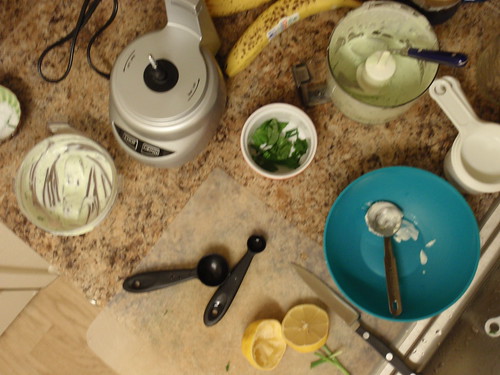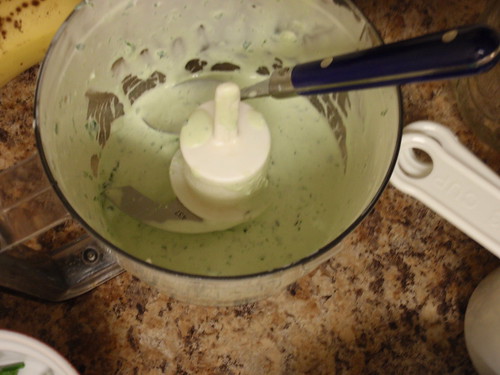Doesn’t that eggplant look downright leisurely, just reclining in the sun, its glossy purple skin radiating health and vitality? Vegetables are such good photography models. They are very good at holding a pose with nary a wobble, except when the wind blows.
I really do think that eggplants are beautiful. My vegetable vanity, if I may call it that, is the reason I buy eggplants, even though I don’t like eating them much. I have a category of vegetables that I call my “maybe” group. This category contains members that I neither love nor hate and keep trying in different forms because I want to love them. Maybe vegetables include eggplants, Brussels sprouts, and beets. The trouble with eggplant and me is the texture: it’s kind of spongy and speckled with seeds. A sponge with seeds is perplexing. Then there’s the issue of peel: leave it on or take it off? I prefer to leave it on for nutrition and appearance. The texture of the peel doesn’t bother me; I have an easier time with it than I do with the spongy interior.
So why do I bother cooking with eggplant at all? I do it because it keeps showing up in recipes that seem promising, like a Provencal-style stew or a salad of roasted eggplant tossed gently with a peppy, garlic-infused green goddess dressing. Melissa Clark’s description of that salad was the selling point for me. She writes, “These salty, browned chunks of eggplant are as addictive as potato chips, though what they lack in crunch they make up for in sweetness. The snappy green goddess dressing isn’t strictly necessary, though it is very nice, adding a creamy, herbal character that goes well with the buttery texture of the eggplant.”
Yum, right? Except that the roasted eggplant in this dish didn’t do it for me. It’s the texture: I’m just not a big fan of the way eggplant implodes on itself. When other vegetables, such as potatoes or broccoli, are roasted, they brown and crisp, gaining a snappy crunch. Some spots even burn slightly, adding an extra layer of dark flavor. Eggplant, at least in my hands, doesn’t really do that. It turns soft and melts into bites that yield easily to the mouth. The flavor of roasted eggplant is pretty good; I think I’d even like it if I took Melissa Clark’s suggestion to “toss it with cherry tomatoes, diced bell peppers, crumbled feta, and vinaigrette for a tasty eggplant salad.” All those raw vegetables would add some chew to the salad; the eggplant would be almost part of the dressing. (And the feta—oh yes! Do not forget the feta.) I might even sneak some wheat berries in there for even more chew and some protein.
That spunky eggplant salad will have to wait for another day. Today I can assure you that the green goddess dressing is outstanding. Laced with three kinds of fresh herbs and two healthy cloves of garlic, it’s a sour cream-based dressing that’s been tarted up with all kinds of greenery. It originally called for anchovies, but I laid down my vegetarian card and omitted them. The dressing has so much going on in it that I didn’t feel like anything was missing, but you of course are welcome to include them.
 (Fear not; no bananas were used in the making of this dressing. Even I have my limits.)
(Fear not; no bananas were used in the making of this dressing. Even I have my limits.)
My favorite way to eat this dressing is with fresh carrots, but I’m imagining that it would be delicious in lots of places: with a vegetable-laced black bean salad, drizzled over steamed green beans, or as a dip with potato chips or even better, oven-roasted potatoes. It reminds me a bit of ranch dressing, but more herbal and pungent. Those two cloves of garlic don’t lose their potent kick, so we all run the risk of garlic breath here. Maybe I’m inconsiderate, but I’m unwilling to let something like garlic breath stop me from eating my carrots dipped in green goddess dressing. And as for anyone who might get close to your mouth, my philosophy is that they should be eating the raw garlic too. A good romance should be able to withstand the taste of a garlic-happy mouth. But it’s okay to take a moment to freshen up, too!
Roasted Eggplant with Basil Green Goddess Dressing
Adapted from In the Kitchen with a Good Appetite by Melissa Clark
Serves 2-3, with some leftover dressing
I decided to give you the whole recipe in the event that you’d like to eat your green goddess dressing with roasted eggplant. But I would like to make a few suggestions. First, I have no idea how a one-pound eggplant is supposed to serve four people. After it has been roasted, one pound of eggplant is not a lot of food. I’d recommend at least doubling the eggplant or even tripling it if you really love roasted eggplant. You could probably cut back on the olive oil too, though I’d use a Silpat or parchment paper to make sure the eggplant doesn’t glue itself to the roasting pan.
Unless you increase the eggplant, you will almost certainly have some leftover dressing, which, like I said, could be put to any number of good uses.
The other issue is the salt. Not all kosher salts are created equal. I found Deb’s explanation of this phenomenon quite helpful, though one must still tread with caution when a recipe specifies “kosher salt.” And now, of course I can’t remember exactly how much salt I used. (I swear my memory is getting worse by the hour.) I will tell you that I went light on the salt in the dressing, just in case. But remember, I also left out the anchovies, which my sources tell me are quite salty. So it’s up to you to taste and adjust the saltiness to your preferences. As Matt says, there is a universe in a grain of salt. And as I say, to each her own.
For the eggplant:
1 large eggplant (about 1 pound), rinsed, trimmed, and cut into 1-inch pieces (but see headnote above!)
5 tbsp. olive oil
1/2 tsp. kosher salt (I used Morton coarse kosher salt)
For the dressing:
1/4 cup sour cream
2 tbsp. mayonnaise
2 anchovy fillets, chopped (optional—you’re on your own here!)
2 garlic cloves, chopped
1 tbsp. chopped fresh chives
1 tbsp. chopped fresh parsley
1 tbsp. chopped fresh basil
1 1/2 tsp. fresh lemon juice
1/4 tsp. kosher salt, plus more to taste
Freshly ground black pepper to taste
1) To make the roasted eggplant, preheat the oven to 400 degrees F. Pour about 2 tbsp. olive oil on a large rimmed baking sheet, then add the eggplant and toss. Drizzle the remaining 3 tbsp. olive oil over the eggplant, sprinkle with 1/2 tsp. kosher salt, and toss well.
2) Roast the eggplant for about 30 minutes, stirring gently once or twice. Let it cool for a bit, then spoon the eggplant pieces into a serving bowl.
3) To make the dressing, combine all the dressing ingredients in the bowl of a food processor. Buzz to combine everything into a silky blended mixture, scraping down the sides as needed. Taste and adjust the salt, pepper, or anything else (more fresh basil?).
4) Toss the eggplant with several spoonfuls of dressing, using your discretion to decide how much. Serve. Refrigerate any leftover dressing. Leftover eggplant salad will keep for a few days in the fridge too.




3 comments:
I have to admit, I love a well-prepared eggplant. Sadly, I frequently prepare them rather poorly, and they tend to use so much oil that I don't often cook them. But this sounds delicious; you are possibly providing inspiration for my next grocery store trip!
Thanks for the recipe!!! Love it
btw, bird nest (www.geocities.jp/hongkong_bird_nest/index_e.htm) is made up of about 58% soluable proteins...the highest amoung all food and even synetic protein powders
it greatly increase tissue regeneration
Oh, a, I hope you try this recipe! I'd love to hear what an eggplant fan thinks about it. It is shocking to see one eggplant tossed in 5 tbsp. of oil, but I think with a little care, you could cut back on the oil. And with the creamy dressing, this dish is definitely not lacking in fat ;-)
Post a Comment